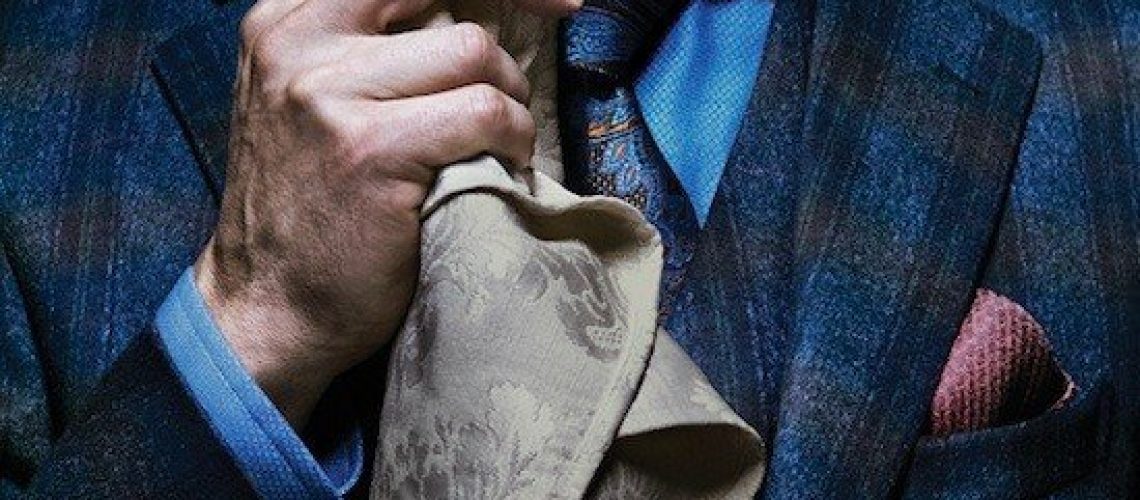I’m dreadfully late to this party, but over the course of the last few weeks, I finally had the chance to catch up on the first season of Hannibal. By and large, I enjoyed it very much, especially Mads Mikkelsen’s incarnation of the title character. I was very struck, too, both by how stylized the series is and how committed it is to bringing full-on horror to the small screen. In this respect, it is a pretty rare animal.*
In his chapter about horror on television in Danse Macabre, Stephen King writes that horror has not been well-served by the medium. One of the big problems is that “television has really asked the impossible of its handful of horror programs — to terrify without really terrifying, to horrify without really horrifying, to sell audiences a lot of sizzle and no steak.” This is back in 1981, and the television landscape has, of course, changed radically since then. There were exceptions to this rule that King could point to then, and there have been even more since, but I think there is still a fair bit of truth to his evaluation even now. There has been a tremendous liberalization with regards to what can be shown, but so much over the years has remained resolutely “horror lite.” This is especially the case with series television, where the guaranteed survival of the protagonists from week to week diminishes the sense of threat. But even something like Masters of Horror rarely lived up to its promise.
Hannibal, it seems to me, avoids almost all the pitfalls faced by horror on TV. Though it is a series, it is one whose ending we already know, and it acknowledges this fact with the deployment of familiar sets, not to mention characters (such as Dr. Chilton and Freddie Lounds) whose ultimate fates colour our experience of them in the present of the series. While gore is hardly a prerequisite for successful horror, it can be tremendously effective, and Hannibal commits to its grisly scenes with such gusto that I had trouble believing this was a network show. More importantly, the gore is highly grotesque and is a crucial part of the series’ big strategy: paying just enough lip-service to being a crime show to shatter the conventions of that form and thus be all the more horrifying.
In this respect, Hannibal‘s near cousin is Se7en, which wore the disguise of a crime thriller, only to have horror burst it apart from the inside, like a xenomorph exploding from its chest. The world of Hannibal is one where hideously inventive serial killers lurk around every corner, where every path leads to violent, horrifically symbolic death. The visual climax of the series is the multi-corpse assemblage from the “Trou Normand” episode. The image is so powerful that no resolution to its mystery could possibly be satisfying, and, sure enough, the revelation is anti-climactic, even with Lance Henriksen on hand. Fortunately, the image recurs in subsequent episodes, its meaning surpassing the prosaic motivations of its creator as it becomes an integral element of Will Graham’s descent into Hell.
In the same way that the power of this horrific construct survives the attempts to explain its provenance, so do the visions and nightmares that haunt the characters leave the rational world and plunge into the uncanny. Though Hannibal eschews any direct use of the supernatural, always providing some kind of quote-unquote rational explanation for what we (and the characters) are seeing, these explanations are always weaker than the visions. The rational world is in a state of ongoing collapse in Hannibal, and the viewer is thus deprived of the reassurance of stable ground.

The series is also, I would argue, the natural extension of the arc traced by Thomas Harris’s novels. Setting aside the disappointing Hannibal Rising (which completed the transformation of the title character from terrifying menace to dark avenger), the movement from Red Dragon through Silence of the Lambs and to Hannibal is away from thriller and toward out-and-out horror, to the point that Hannibal reads as if its film adpatation should have been directed by Dario Argento at the height of his powers. The series continues this movement, with the added kick of returning Hannibal Lecter to his earliest, most menacing incarnation. It proves that uncompromising horror is possible in series television, and I’ll be very interested to see where it goes next.
————————————
*A necessary caveat to this entire entry: I have not yet had the time to watch American Horror Story, though I have just bought the first two seasons. So it may well undermine everything I’m about to write here. I hope it does. And there’s Sleepy Hollow. So I am rather optimistic about future viewing.










One Response